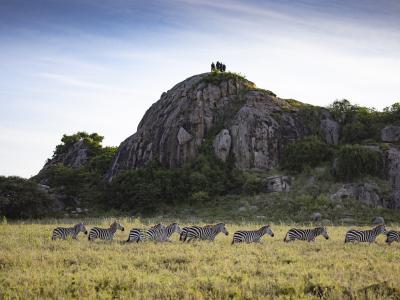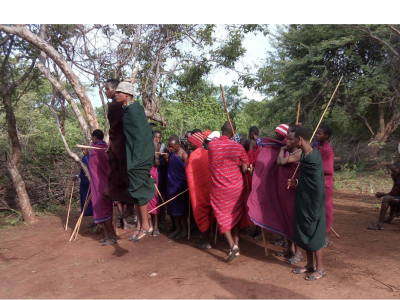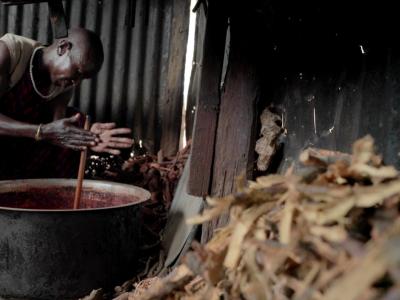Tanzania has the largest wild lion population in Africa, with at least 40 percent of the continent’s lions, and the third largest African elephant population. It has 22 national parks, with an impressive 39 percent of its land officially protected for wildlife. Yet much of Tanzania’s wildlife still spends all or part of its time roaming outside or between national parks. Partly as a result, wildlife in Tanzania faces an array of threats, including conflict with humans, bushmeat hunting, poaching, habitat loss and climate change.
For the future of conservation, it is vital to find a way for humans and wildlife to live alongside each other. We believe Tanzania can be a model for this for the rest of Africa. We also understand that communities that earn money from keeping wildlife alive are more likely to protect and conserve it, leading to a reduction in hunting, poaching, and retaliatory killings of iconic species.
WildAid is committed to supporting community wildlife management areas (WMAs) in Tanzania, in partnership with the Honeyguide Foundation and the Community Wildlife Management Area Consortium. WMAs have been established to protect wildlife and their habitats on key migration routes and dispersal areas outside core protected areas, while providing economic opportunities for local communities through wildlife-based businesses. The consortium aims to establish 12 financially self-sustaining WMAs, with income from tourism and carbon credits funding their activities and encouraging communities to preserve wildlife resources.
To ensure the success of WMAs, we believe in empowering communities and providing them with the tools they need to protect and benefit from wildlife. This includes training community leaders on effective communication strategies, supporting the development of long-term plans to attract investors in tourism and carbon credits, and lobbying at district and national levels to support policies that enable financial sustainability in WMAs.
Our approach also includes empowering the media by providing conservation content and training journalists to make regular reports on the benefits of wildlife, changing the narrative from human-wildlife conflict to human-wildlife interdependence, and creating real, fundamental change.
Key stats
- Tanzania has the third largest elephant population in Africa
- Tanzania lost 60% of its elephants in just five years to 2014, but numbers have since recovered somewhat.
- Poaching has declined by 70 percent from peak levels.
- In 2019, tourism accounted for 10.7% of Tanzania's GDP and employed over 2 million people
- In 2019 Tanzania earned $2.6 billion or 6 trillion shillings from tourism, much of which is driven by foreign and local people visiting national parks to see wildlife.
- There are only about 20,000 lions left in the wild across all of Africa. A century ago, there were 200,000 lions in Africa. Most of this decline has happened in just the last two decades.
- Lions used to roam across most parts of Africa; today they have vanished from 94% of this range.
- Around 40% of Africa's lions are in Tanzania, most of which live in Ruaha National Park. Even in Tanzania, lion numbers are declining.
- This is mostly due to the fact that 60% of Tanzania’s lions live outside protected areas, which makes them vulnerable to a number of threats.
#bethepride
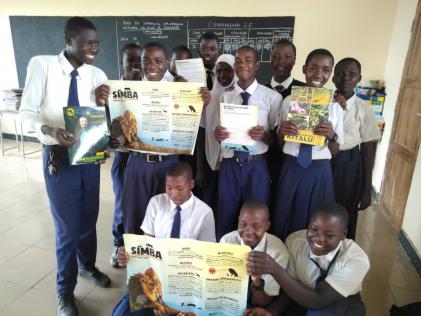 In 2019 WildAid launched its be the pride campaign in Tanzania, highlighting the value of protecting lions to the country and the world. Through television, billboards, social media, and radio, we have distributed messages from celebrities, politicians and local conservation heroes urging collective action to safeguard lions and their habitats. The campaign highlights the importance of lions for the economy, for African heritage and for the environment.
In 2019 WildAid launched its be the pride campaign in Tanzania, highlighting the value of protecting lions to the country and the world. Through television, billboards, social media, and radio, we have distributed messages from celebrities, politicians and local conservation heroes urging collective action to safeguard lions and their habitats. The campaign highlights the importance of lions for the economy, for African heritage and for the environment.
#jointheherd
In 2015, WildAid launched the “Join the herd” campaign in Tanzania with the slogan “Poaching steals from us all”. With the support of high-profile celebrities, the campaign went viral on social media, raising awareness on the plight of elephants and the importance of protecting them. In partnership with the religious council of Tanzania we published a book showing how religious teaching supports the protection of wildlife. Since then, the Tanzanian government has strengthened law enforcement on wildlife crimes, leading to the sentencing of a Chinese businesswoman nicknamed the Ivory Queen to 15 years in jail in 2019 for running one of Africa's largest smuggling rings out of Tanzania. Elephant populations in Tanzania have risen to around 60,000 in 2019 from 43,000 in 2014.
Benefits of thriving lion populations
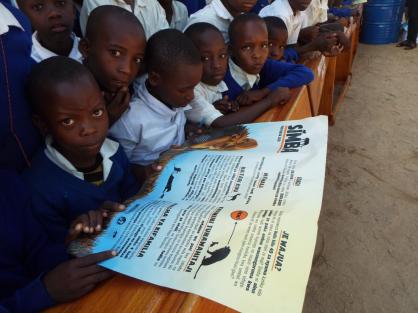
- Tourism and Economy - Lions are part of the big five and top of the list of animals that tourists come to Tanzania to see. Wildlife is the main driver for tourism in Tanzania and provides millions of jobs ranging from hospitality to transportation to infrastructure. Revenues earned by tourism support the country’s development by providing funds to improve important services like schools, roads, hospitals and water supply.
- Environmental Balance - Lions are what are known as a keystone species, meaning the survival of other animals depends on them. Lions control herbivore populations, preventing overgrazing and land degradation. This ensures that soils remain stable and fertile, water sources do not dry out and the climate is controlled. Lions also kill weak or sick prey preventing diseases from spreading to our livestock. When protected, lion habitats are also “carbon sinks” which means they hold reserves of carbon that would otherwise be released into the atmosphere furthering climate change. This impacts everything from water supplies to the crops we grow. Watch this video for more information:
- Heritage, Culture and Identity - The symbolism of the lion is one that many tribes in Tanzania incorporate in storytelling, art and dance. Many brands and corporations in the country also strongly identify with the symbols of lions because of what they represent - qualities like strength, majesty, power and resilience. Lions are everywhere from our shilling notes to names of football clubs, and to bags of cement, spice packets and biscuits.



